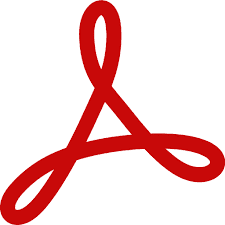What is the Ashridge Mission Model?

Managers and employees are occasionally searching for a purpose and a sense
of identity. They want more than just pay, safety and an opportunity to develop
their skills. They want a "Sense of Mission". In fact there
are a number of functions that a Mission can have in
any organization. These can be internal and external and include:
- To inspire and motivate managers and employees to higher levels of performance.
(Sense of Mission)
- To guide resource allocation in a consistent manner.
- To help to balance the competing and often conflicting interests of
various organizational stakeholders. Compare also:
Stakeholder Analysis,
Stakeholder Mapping
- To provide a sense of direction.
- To promote shared values amongst employees.
- To refocus an organization during crises.
- To improve corporate performance.
A Mission Statement is an articulation of a company's mission. An
often-used definition of a mission statement is: "a broadly defined
but enduring statement of purpose that distinguishes the organization from
others of its type and identifies the scope of its operations in product (service)
and market terms” (Pearce, J.: The company mission as a strategic tool. Sloan
Management Review, 1982, 23-3, pp. 15-24). According to Campbell, mission
statements frequently do more harm than good because they imply a sense of
direction, clarity of thinking, and unity that rarely exists. Instead of uplifting
employees with elevating ideals, they encourage cynicism. The Ashridge
Mission Model from Andrew Campbell is a method that can be used to create
or analyze a Mission, Sense of Mission and Mission Statement. The Ashridge
model integrates two historic schools to determine a Mission:
- The Strategic School. A Mission is primarily seen as the first
step in the strategy process. It defines the business's commercial rationale
and target market.
- The Cultural/Philosophy/Ethics School. A Mission is primarily
seen as an expression or statement that should ensure good cooperation between
employees. It is a cultural glue which enables an organization to function
as a collective unity.
The Ashridge Mission Model contains the following four elements which should
be linked tightly together, resonating and reinforcing each other to create
a strong Mission:
- Purpose. Three categories:
- Strategy. The commercial logic for the company. Strategy links
purpose to behavior in a commercial, rational, left-brain way. (Compare:
Whole Brain Model)
- Values. The beliefs and moral principles that lie behind a company's
culture. A Sense of Mission occurs when employees find their personal
values aligned with the organizational values. Values give meaning
to the norms and behavioral standards in the company. Values are strong
motivators to act in the best interests of the purpose of the company. They
can provide a rational for behavior that is just as strong as strategy.
But in another, emotional, moral, ethical and right-brain way. It is for
this reason that the Ashridge framework has a diamond shape. Compare:
Seven Signs
Of Ethical Collapse
- Policies and Behavioral Standards. Guidelines to help people
to decide what to do on a day-to-day basis.
Origin of the Ashridge Mission Model. History
The model is based on research conducted in 53 large companies by the Ashridge
Strategic Management Center. Its founding director, Andrew Campbell, has spent
much of his professional career studying mission statements. Campbell’s framework
of four important mission statement dimensions has come to be known as the
Ashridge Mission Model.
Usage of the Ashridge Mission Model. Applications
- Helps to think clearly about mission.
- Helps to discuss mission with colleagues.
- Both for developing a new Mission and analyzing an existing
Mission.
- A corporate mission must not be confused with a corporate vision.
A vision is a mental image of a possible and desirable future state of the
organization.
Steps in the Ashridge Mission Model. Process
Ten questions by which you can measure the quality of a mission statement
are:
- Purpose
- Does the statement describe an inspiring purpose that avoids playing
to the selfish interests of the stakeholders - shareholders, customers,
employees, suppliers?
- Does the statement describe the company's responsibility to its stakeholders?
- Strategy
- Does the statement define a business domain and explain
why it is attractive?
- Does the statement describe the strategic
positioning that the company
prefers in a way that helps to identify the sort of
competitive advantage
it will look for?
- Values
- Does the statement identify values that link with the organization's
purpose and act as beliefs that employees can feel proud of?
- Do the values 'resonate' with and reinforce the organization's strategy?
- Behavioral Standards
- Does the statement describe important behavioral standards
that serve as beacons of the strategy and the values?
- Are the behavioral standards described in such a way that individual
employees can judge whether they have behaved correctly or not?
- Character
- Does the statement give a portrait of the company and does
it capture the culture of the organization?
- Is the statement easy to read?
Strengths of the Ashridge Mission Model. Benefits
- Combines strategic and cultural motivators to guide an organization.
- The model is particularly useful to ensure that a company has a clear
Mission AND it has employees with a strong Sense of Mission.
- Like the 7-S Framework of McKinsey, the
Ashridge Mission Model emphasizes the need for a fit between strategy and
values. Additionally the Ashridge model recognizes the importance of the
link between the organizational shared values and the private values of
employees and managers.
- Improves decision-making. Raises energy levels. Reduces the need for
supervision. Promotes constructive behavior. Increases satisfaction and
loyalty.
- Puts corporate purpose as the corner stone and starting point of mission.
Limitations of the Ashridge Mission Model. Disadvantages
- Having inappropriate values or an inappropriate sense of mission is
a powerful negative influence on employee behavior.
- Shared values and sense of mission often are extremely difficult to
change and can become an obstacle for change.
- Strongly shared values or a strong sense of mission can lead to an insularity
that becomes xenophobic.
- Creating a mission statement is often a time- and resources-consuming
process.
- A mission paper may not be a 'paper tiger'.
Assumptions of the Ashridge Mission Model. Conditions
- Committed employees and teams perform more efficiently and more effectively
than apathetic employees and teams do.
- People connect themselves more easily to values than to abstract strategic
concepts.
- A mission must be clearly defined and managed. An intuitive understanding
of mission is not enough.
Book: Andrew Campbell
and Laura L. Nash - A Sense of Mission - Defining Direction for the Large
Corporation
|
Forum discussions about Mission Development.

|
A Mission is a Calling or a Vow
We consider a mission as a calling or a vow.
Niat (Indonesian) is placed deep down in our paradigm, in our way to see the world. It is a solemn promise to do specific things for life as a whole. It s...
 5  1 comments |

|
The 2 Strategic Domains of a Corporate Mission
A mission statement captures two inter-woven strategic domains:
1. The BUSINESS SCOPE, which summarizes the company's competitive space (the industry) into opportunities and threats (the outcomes say...
 4 |
|
🔥
|
3 Categories of Corporate Purpose
In his article of 1991, Campbell also argues that if the overall idea of purpose exists, organizations can be categorized into three categories of purpose:
1. Some organizations say that they operate...
 3 |

|
Dealing with Diversity...
What if we're in a democracy where people are stuck, scared, and do not want to except the responsibility to change? What if we're in an organization where people do not believe in change? What if we ...
 3  1 comments |

|
Continuous Change of Mission
Organizations having articulated a mission and vision clearly, facilitate the "alignment of the employees" to the mission, vision and thereby the goals and purposes. This may be seen as "planned" and ...
 2  2 comments |

|
Ashridge Model not Realistic
I think that the assumptions taken are not based on realities. Thus, I believe that the model will find find it difficult to apply in practice.
Human beings find it easier to relate to tangibles rath...
 0  2 comments |
|
|
|
Courses about Mission Development.

Beginners Course
|

Advanced Course
|

Course for Experts
|
|
|
|
The best, top-rated topics about Mission Development. Here you will find the most valuable ideas and practical suggestions.
|
🥇
|
The Absence of a Strategic Mission
In any organisation there is a time to reflect and/or report.
But how can one reflect and report if there is no clear defined objective/mission?
A lot of managers still miss that point. One cannot a...
 18  26 comments
|
|
|
|
Advanced insights about Mission Development. Here you will find professional advices by experts.

Consultancy Tips
|

Teaching Tips
|

Practical Implementation Tips
|
|
|

|
Three Functions of a Mission (Statement) Reasons for Creating a Mission (Statement)
Defining the mission statement is a major part of the strategic planning process. A mission has three functions or goals...
|

|
Typical Content of Value Statements Strategy, Leadership
Common Topics in organization’s value statements, include:
- Commitment to such outcomes as customer satisfaction and ...
|

|
Write a Personal Mission Statement Establish focus on who you want to be in your life...
Covey wrote this pearl of wisdom in his book Seven Habits: "The key to the ability to change is a changeless sense of wh...
|

|
How to Articulate, Communicate and Deliver on a Corporate Purpose Statement How to Create a Corporate Purpose Statement, Corporate Mission, Organizational Purpose, Organizational Mission
A Corporate Purpose Statement (CPS) has at least 3 major functions: market definition, employee motivation and external ...
|

|
A Corporate Theory: Long-term Handhold and Guidance in Turbulent Times? Inside-out Corporate Strategy, Corporate Visioning
According to Professor Todd Zenger, companies should focus less on competitive advantage (this isn't what really interes...
|

|
4 Types of Mission Statements Which Type of Mission Statement is Right for Your Firm?
Missions that have been formulated by company's can be very different from each other, depending on their goals / functi...
|

|
Organodynamics: the 3 Laws at the Basis of Performance in Organizations Strategic Performance Management, Leadership, Corporate Mission, Corporate Culture
Sherwood (2014) introduces the concept of organodynamics, a concept that explores the level of performance that can be a...
|

|
Careful: How Mission Statements Can also Demotivate Employees Designing and Implementing Mission Statements
One of the main positive effects of mission statements is that they're motivating and inspiring employees. A mission sta...
|

|
Impact on Performance Strategy, Formulation Mission
In a comparison of the performance of companies with “high-content” mission statements versus those with “low-content” m...
|

|
How to Inject Corporate Purpose Into Corporate Governance Enacting Purpose, Organizational Purpose Implementation, Corporate Sustainability, ESG, SCORE Framework
Many models and frameworks have been created wrt Corporate Responsibility and ESG. But how can you actually make it happ...
|

|
Steps to Market Redefinition and Mission Redefinition How to Reformulate a Firm's Mission?
These are the steps that could be taken to formulate a new market definition and a mission reformulation:
1. Make a def...
|
|
|
|
Various sources of information regarding Mission Development. Here you will find powerpoints, videos, news, etc. to use in your own lectures and workshops.

|
CSR Implementation and Communication Model (Schmeltz) CSR Communication, CSR Implementation, CSR Strategy, Corporate Identity, Corporate Values, CSR Stages,
Because Corporate Social Responsibility is a value-based concept, it is highly connected with an organization’s values a...
|

|
Martin's Trust Model: The Trust Matrix Trust, Corporate Reputation, Corporate Branding, Corporate Image
An important determinant of the reputation of your brand, company or sector is TRUST. In the financial sector for exampl...
|

|
Five Questions to Briefly Outline any Business (Drucker) Business Strategy, Business Mission, Peter Drucker, 5 Questions
In order to get a first quick overview of a firm, Peter Drucker used to ask 5 apparently simple questions when he was in...
|

|
Using Vision and Mission Statements for Setting Strategic Direction Formulation of Mission, Vision Statements
This presentation explains Vision and Mission Statements and how these two differ. The following sections are included i...
|

|
Ashridge Mission Model Diagram Corporate Mission
Download and edit this 12manage PowerPoint graphic for limited personal, educational and business use.
Republishing in ...
|

|
Mission Value Corporate Mission
Paper by Christopher K. Bart shows that mission statements may have a valid place in the measurement and reporting of an...
|
|
|
|
Useful tools regarding Mission Development.

News
|

Videos
|

Presentations
|
| |

Books
|

Academic
|

More
|
|
|
|
Compare with Ashridge Mission Model: 7-S Framework
|
Strategic Intent
| Moral Purpose
| Seven
Signs Of Ethical Collapse |
Charismatic Leadership
| Shareholder Value
Perspective |
Stakeholder Value Perspective
| Clarkson Principles
| Stakeholder Analysis
| Stakeholder Mapping
| Spiral Dynamics
| Hierarchy of Needs
| Corporate Reputation
Quotient | Cultural Dimensions
| Whole Brain Model
| Leadership Styles
| Competing
Values Framework |
Strategic Alignment
| Causal Model of Organizational
Performance and Change
Return to Management Hub: Change & Organization | Communication & Skills | Ethics & Responsibility | Human
Resources | Knowledge & Intangibles |
Strategy
More Management Methods, Models and Theory
|
|
|














